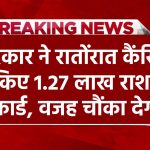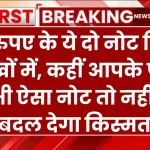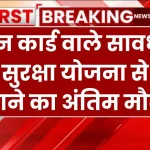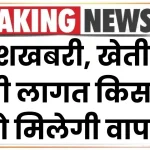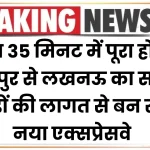Second £300 Cost of Living Payment: The Second £300 Cost of Living Payment is a vital financial boost for millions of UK households, arriving at a time when energy prices, food costs, and housing expenses continue to stretch budgets thin. This government-issued payment is part of a wider package of support designed to help low-income families, pensioners, and vulnerable individuals manage rising living expenses.
If you’re wondering whether you’re eligible, how to claim it (spoiler alert: you don’t have to), and what to do if you haven’t received it yet—this guide covers it all in clear, simple terms.

Second £300 Cost of Living Payment
| Aspect | Details |
|---|---|
| Payment Amount | £300 |
| Eligibility Criteria | Recipients of Universal Credit, Income-based JSA, Income-related ESA, Income Support, Pension Credit, Child Tax Credit, or Working Tax Credit. |
| Qualifying Period | 18 August to 17 September 2023 |
| Payment Dates | Between 31 October and 19 November 2023 |
| Application Required? | No — automatic payment if eligible |
| Where It’s Paid | Direct to your usual benefit account with reference “DWP COL” or “HMRC COLS” |
| Next Steps if Not Received | Report a missing payment at gov.uk |
| Official Resource | Visit Official GOV.UK Website |
The Second £300 Cost of Living Payment is a much-needed financial cushion for millions across the UK. Whether you’re a pensioner, a working parent, or on disability support, this payment helps bridge the gap during financially tough times. Understanding the eligibility criteria, payment schedule, and additional local support available empowers you to make the most of what’s offered—and to take action if something goes wrong.
Always refer to official government sources like gov.uk for the most up-to-date information.
Why the Cost of Living Payment Was Introduced
The Cost of Living Payments were first rolled out in 2022 in response to a dramatic rise in inflation, energy prices, and overall living costs due to global instability and economic recovery post-COVID-19. By 2023, inflation had reached over 10% in the UK, causing real-term wage stagnation and financial strain for many families.
To ease this pressure, the government implemented a three-part Cost of Living Payment series:
- First Payment: £301 (Spring 2023)
- Second Payment: £300 (Autumn 2023)
- Third Payment: £299 (Scheduled for Spring 2024)
Each is part of a broader £900 package for eligible households.
Eligibility: Who Qualifies For Cost of Living Payment?
You may qualify if you received any of the following benefits during the qualifying period (18 August to 17 September 2023):
- Universal Credit
- Income-based Jobseeker’s Allowance (JSA)
- Income-related Employment and Support Allowance (ESA)
- Income Support
- Pension Credit
- Working Tax Credit
- Child Tax Credit
Important: If your benefit was reduced to £0 due to income changes or sanctions during the qualifying window, you won’t be eligible for that payment period (known as a “nil award”).
For complete eligibility rules, check the official GOV.UK eligibility page.
How and When Payments Are Made
Payment Timeline
For most recipients, the £300 payment was issued between 31 October and 19 November 2023.
How It Arrives
Payments are sent automatically to your usual benefit account. The reference line will read:
- “DWP COL” (if receiving DWP-administered benefits)
- “HMRC COLS“ (if receiving only Tax Credits)
No application or claim form is needed.
What to Do If You Haven’t Received Your Payment
- Wait a few days after 19 November – Delays can happen.
- Check your bank statements – Look for the correct reference.
- Visit GOV.UK’s missing payment tool
- Contact your benefit office – Especially if you’re receiving Tax Credits from HMRC or other benefits from DWP.
Who Benefits? Real-Life Scenarios
Working Single Parent on Universal Credit
Sarah, a single mum of two working part-time, receives Universal Credit. She automatically received the £301 in spring and the £300 in October. These payments help cover back-to-school costs and rising grocery bills.
Pensioner Living Alone
David receives Pension Credit and lives alone. The Cost of Living Payment helps him afford increased heating bills during the colder months without falling into debt.
Full-time Worker with Tax Credits
Michael works full-time but earns a modest income. He receives Working Tax Credit and is eligible for the payment, helping bridge the gap for food and transportation costs.
Additional Tools & Support
Useful Tools:
- Turn2Us Benefit Calculator
- EntitledTo Benefit Checker
- Apply for Household Support Fund
Household Support Fund
Local councils also offer discretionary support through the Household Support Fund, which covers essentials like:
- Energy bills
- Food
- Rent
- Essential items (like clothing or white goods)
Visit your local council website to apply. Support varies by area.
What’s Next? Future Outlook for 2025
The government has announced a third Cost of Living Payment of £299, expected to be paid in Spring 2024. After that, future support may depend on economic conditions and the next Budget announcement.
Stay informed by following updates at GOV.UK.
Stay Safe from Scams
Scammers may impersonate government agencies. Remember:
- You never need to apply for these payments.
- Government agencies will not text, email, or call asking for personal or banking information.
- Report suspicious activity to Action Fraud.
How to Claim the £230 State Pension Boost in 2025 – Check Eligibility Criteria to Get DWP Increase!
2025 DWP Benefits Update: Check Important Changes UK Families Must Be Aware Of!
DWP Benefits Increase 2025: Check Important Changes and What They Mean for UK Families!
FAQs About Why the Cost of Living Payment Was Introduced
Q1: Can I get more than one Cost of Living Payment?
A: You’ll only get one payment per period, even if you qualify through multiple benefits.
Q2: Will it affect my taxes or other benefits?
A: No. The payments are non-taxable and won’t affect your existing benefits.
Q3: I’m new to Universal Credit. Can I still get the payment?
A: Only if you were eligible during the qualifying period.
Q4: Will there be payments in 2025?
A: As of now, the last planned payment is in Spring 2024. Further support will depend on future government decisions.
Q5: Is there support for people not on benefits?
A: Some local councils offer limited help via the Household Support Fund, even if you’re not on benefits.


